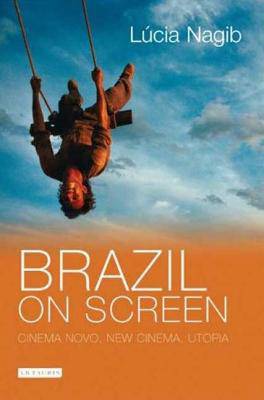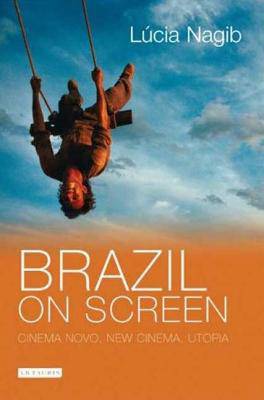
Je cadeautjes zeker op tijd in huis hebben voor de feestdagen? Kom langs in onze winkels en vind het perfecte geschenk!
- Afhalen na 1 uur in een winkel met voorraad
- Gratis thuislevering in België vanaf € 30
- Ruim aanbod met 7 miljoen producten
Je cadeautjes zeker op tijd in huis hebben voor de feestdagen? Kom langs in onze winkels en vind het perfecte geschenk!
- Afhalen na 1 uur in een winkel met voorraad
- Gratis thuislevering in België vanaf € 30
- Ruim aanbod met 7 miljoen producten
Zoeken
€ 59,45
+ 118 punten
Omschrijving
Two periods of Brazilian film history are particularly notable for their artistic momentum: the Cinema Novo movement of the 1960s and early '70s, and the film revival from the mid 1990s onwards. What makes them especially strong, this book argues, is their utopian impulse. By adopting Utopia as a theme, as well as a method of film analysis, Lucia Nagib unveils, organises and interprets a fascinating wealth of recurrent images, which are a bridge between a cinema strongly concerned with the national project and another informed by global culture. Outstanding recent films, such as "Central Station", "Perfumed Ball", "Hans Staden", "Orfeu", "City of God" and "The Trespasser", are illuminated by Nagib's sharp analysis, which detects utopian, anti-utopian and even dystopian impulses in them. They are at once representatives of a political arena in constant struggle against underdevelopment and legitimate (as well as critical) heirs of past cinematic traditions.
Throwing new light on a large selection of Cinema Novo and contemporary films, this book thus presents a national cinema that rejects the end of history and of film history, while benefiting from, and contributing to, a new transnational aesthetics.
Throwing new light on a large selection of Cinema Novo and contemporary films, this book thus presents a national cinema that rejects the end of history and of film history, while benefiting from, and contributing to, a new transnational aesthetics.
Specificaties
Betrokkenen
- Auteur(s):
- Uitgeverij:
Inhoud
- Aantal bladzijden:
- 184
- Taal:
- Engels
- Reeks:
Eigenschappen
- Productcode (EAN):
- 9781845113285
- Verschijningsdatum:
- 1/07/2007
- Uitvoering:
- Paperback
- Formaat:
- Trade paperback (VS)
- Afmetingen:
- 161 mm x 235 mm
- Gewicht:
- 326 g

Alleen bij Standaard Boekhandel
+ 118 punten op je klantenkaart van Standaard Boekhandel
Beoordelingen
We publiceren alleen reviews die voldoen aan de voorwaarden voor reviews. Bekijk onze voorwaarden voor reviews.









